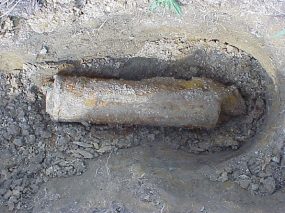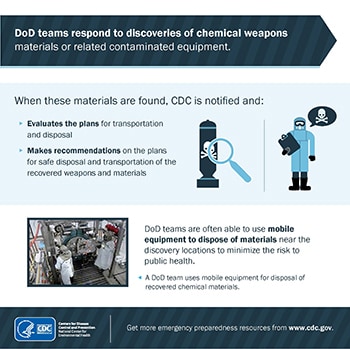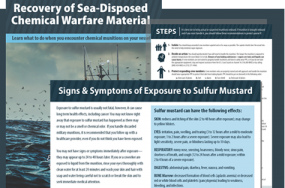Recovered Chemical Weapons and Other Chemical Agent Materials
Historically, chemical agents and munitions were tested and disposed of on military installations. Like with other wastes, burial was the accepted disposal method up until the 1970s. This practice has left buried munitions at some military and former military installations. From 1967 to 1970, thousands of tons of chemical warfare agents and munitions were loaded onto old ships and intentionally sunk at sea. This program was called Operation Cut Holes and Sink ‘EM (CHASE).
In 1997, the United States ratified the Chemical Weapons Convention, mandating destruction of stockpiled chemical weapons, former chemical agent production facilities, recovered chemical weapons, and other chemical agent material. Much of it has been destroyed, but some remains, both underground and at sea.
Discarded chemical weapons have been found in unlikely places:

- In Delaware, an artillery shell was found in a driveway paved with crushed clamshells.
- In New York, commercial fishermen found chemical munitions while dredging for clams off the coast of Long Island. Two fishermen were treated at a local hospital. Fortunately, their nurse was trained to recognize chemical agent symptoms.
- In the District of Columbia, chemical agents were found buried on the property of private residences during excavation.
If you see a suspicious object, call your local police department. Do not try to move it yourself.
When possible chemical weapons or other material are found on land, the Recovered Chemical Materiel Directorate responds to assess for chemical agent and plans for the destruction and disposal of the item.
If the item is chemical agent material, CDC is notified and reviews the transportation and disposal plans. These reviews for public health and safety typically include onsite inspections and review of air monitoring capabilities.

